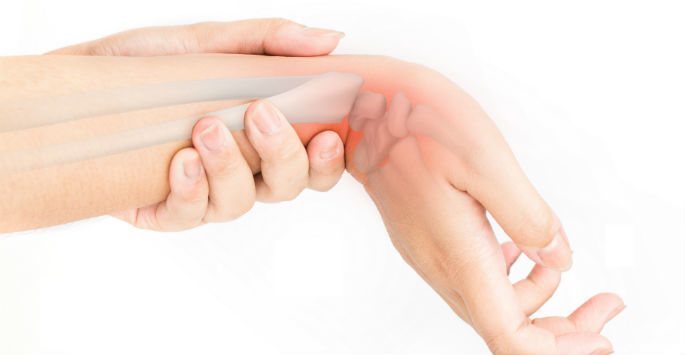Dupuytren’s contracture is a disease that primarily affects men of North European descent. The primary symptom of the disease is a deformity of the hands that gets worse over the years. The condition damages the tissue that is right under the skin in the palm. The palm develops a knot of tissue that eventually becomes a thick cord. The thick cord eventually exerts pressure on a couple of fingers in the hand, leaving them in a permanently bent position.
Since the affected individual cannot straighten their hands, easy activities start to become a challenge to perform. For example, trying to put your hands in your pockets becomes impossible because you cannot straighten out all of your fingers. The same is true with wearing gloves or trying to shake another person’s hand.
While the disease can affect any of your fingers, it is more commonly seen in the ring finger and the pinky. While there is no cure for the disease, there are some treatments that are designed to slow down how quickly the disease progresses or relax some of the contractions in the hand. At Arora Hand Surgery, we may use XIAFLEX, an injectable enzyme, as part of a non-surgical Dupuytren’s contracture treatment regimen.
Causes and Symptoms of Dupuytren’s Contracture
Scientists are still mystified as to the exact cause of Dupuytren’s contracture. They have seen a link between individuals who have certain forms of diabetes, epilepsy, alcoholism and seizure disorders.
Dupuytren’s contracture is a hereditary disease. It is most often seen in men who are over the age of 50. The disease may affect both hands at the same time or just affect one hand. It is very rare that an individual suffering from this disease experiences pain. Most patients only report pain if they attempt to forcibly hyperextend their fingers.
While this disease primarily affects a person’s hands, researchers have seen it affect the soles of the feet as well. Doctors are able to diagnose the disease during a visual examination of the affected hand. Usually, other tests such as X-rays are not needed. At times, injuries to the hands, such as burns or other injuries that cause scar formation, might mimic Dupuytren’s contracture.
XIAFLEX: An Exciting Dupuytren’s Contracture Treatment Option
XIAFLEX is a relatively new treatment option for Dupuytren’s contracture. It works by breaking up the collagen-based scar tissue that forms in the hands, causing them to bend in an awkward position. As collagen formations break up, they become loose and the contracted tissue is able to return to normal mobility.
XIAFLEX is delivered via injection. Most patients are able to grasp objects, flex their fingers and have improved dexterity in their hands after a series of these injections.
This enzyme injection has been a lifesaver for many patients. This is because there is nothing that can be done to prevent Dupuytren’s contracture from developing. Since the disease develops slowly, treatment, especially treatment that begins early, generally works well.
With the proper Dupuytren’s contracture treatment, most patients are able to improve their quality of life drastically. During a consultation at Arora Hand Surgery in Macomb, Warren, Howell, or West Bloomfield, you can learn more about your treatment options for your condition. Contact us today to schedule an appointment!
















